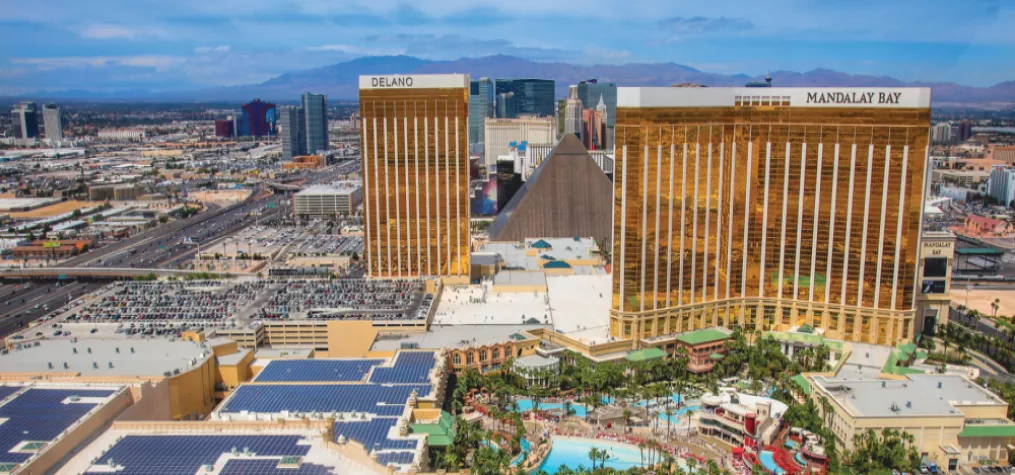At the recent Corporate Event Marketing Association (CEMA) Summit 2022, hospitality industry visionary Michael Dominguez, CEO of Associated Luxury Hotels International (ALHI), “edutained” attendees with his “State of the Industry” trend forecast. Michael delivered what can best be described as a full semester of macro and micro economics in an hour—in his signature high-energy, engaging and accessible style.
His key takeaway was that it’s an important time to be decisively indecisive. The post-pandemic dust hasn’t fully settled, so it’s prudent to not make definitive, long-term decisions. He cautioned the audience to be mindful of two human decision dynamics that can potentially bias the choices we make during uncertain times:
- Confirmation bias: the tendency to embrace information and ideas that align with your worldview, and to reject those that are contrary to your thinking, without considering the facts.
- Affective forecasting: the tendency to expect positive outcomes during good times and negative ones when things are down—irrespective of the facts.
With both of these dynamics, it’s important not to go all in on a narrative without doing your homework.
To underscore this idea, Michael highlighted four popular trend perceptions.
1. Work from home is not really here to stay.
In 2021 we thought we were going to work from home forever. Fast forward a year, and we’re going back to the office. It’s a good thing, too. A Conference Board work from home study found that during the height of work from home, time in meetings, work hours, employee burnout and employee mental health issues increased, while work-life balance, employee morale and employee well-being decreased. A recent Gensler study showed that only 12% of workers want to work from home full time. Why? Because we all miss people, engagement and interaction, and younger workers want to develop soft and social skills.
2. The great resignation is really a great attrition.
People are not leaving the workforce, they are moving to new jobs. Commerce Department data indicates that every industry has positive net hires. A big reason for this is that 5.3 million new companies started during the pandemic. Massive job change also underscores the importance of culture and work environment, compensation and advancement.
3. Labor shortages are not necessarily due to resignations.
One big driver is our national immigration policy. We depend on seasonal labor but lost 120,000 seasonal workers during the pandemic because they couldn't get H2B Visas. Another reason is childcare. Keeping schools closed for more than a year put childcare out of business, and today we are short 100,000 childcare workers in the industry. We're also struggling to get housekeepers back into our properties. A third factor is housing costs. Workers can’t afford to live in resort destination communities. Some hotels are renting rooms at extended-stay hotels over several years to address the housing shortage.
4. Marketing to millennials might be a miss.
We spent a decade talking about building hotels for millennials, but millennials don't have money…at least not yet. Boomers have money—literally $22 trillion sitting in 401K plans, and they’re spending it on travel. Boomers are living longer, and they're the wealthiest generation. So we have to stay relevant to the millennial for the future and at the same time attract the wealth generation today.
Michael shared some encouraging stats on the hotel industry:
- For the fourth month, in the U.S., we've exceeded 2019 numbers. Right now, our average daily rate is 15% higher than it was in 2019. We're still down on average 9% over the last four months, but the rate is up and continuing to increase at roughly 12%.
- The industry was disciplined in not dropping rates during the health crisis because the slow down had nothing to do with rates. This is the reason we've recovered in less than 18 months, when it took us nine years in the Great Recession recovery.
- Recovery is bifurcated. Resorts in suburbia and airport hotels are doing well. Urban properties are not quite there, but they’ve had a solid last three months. Luxury independent hotels, especially along the coastlines, are doing well.
- States and cities that opened their economies early during the pandemic are bouncing back more quickly and are more likely to ride out a recession.
- We will set record demand in 2023, and it took us 10 years to do that after the Great Recession. That's how fast we're actually recovering.
He also offered a few sobering notes:
- U.S. wage growth is accelerating and driving inflation, which is not going away soon. Hospitality wage growth outpaces every other industry in the U.S.—and those rising labor costs impact hotel rates. Inflation has grown 9.1%. Core inflation is the highest inflation we've seen since the 1980s.
- We are in a recession—technically speaking. But it feels different. One silver lining is that, unlike in 2009, there is a lot of liquidity in corporations and not a lot of debt. That’s reason for hope. The recession isn't going to be too deep or too long. We may be able to push through because there's a lot of cash sitting on the sidelines.
As always, Michael wrapped up with sage advice: Everyone in the value chain should be having intelligent, realistic conversations about these dynamics and how they will impact 2023 budgets. Stay flexible, avoid confirmation bias and affective forecasting, deal with the world as it is, and you’ll avoid coming up short.
Don’t miss any event-related news: Sign up for our weekly e-newsletter HERE, listen to our latest podcast HERE and engage with us on Twitter, Facebook and LinkedIn!


